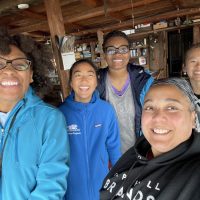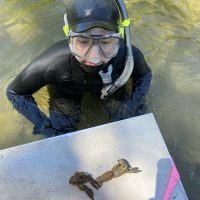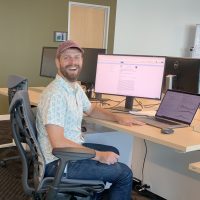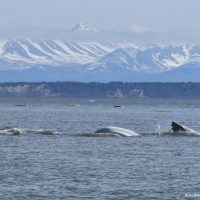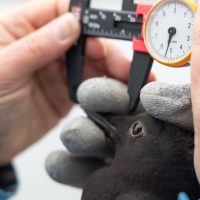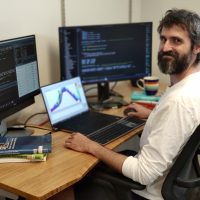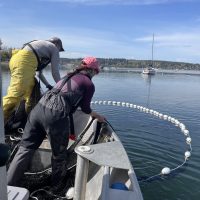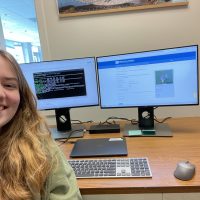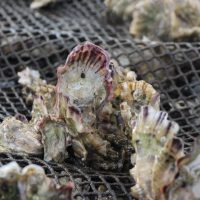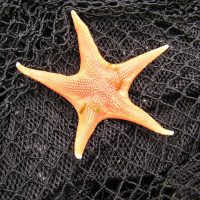Filter Results
Marine science mentoring over the summer at FHL
Spending the summer at Friday Harbor Labs (FHL), SAFS grad student Chris Mantegna mentored four students – two as part of the NSF-funded Research Experience for Undergrads-Blinks (REU) program and two as part of the Doris Duke Conservation Scholars Program (DDCSP). During the program, students get to collaborate on a research project with their scientist-mentor to build marine research skills.
Specifically geared towards enhancing diversity within the marine sciences, the program welcomes students from underrepresented groups.
Summer field season with the Freshwater Ecology and Conservation Lab
Claire Vaage, a masters student in the Freshwater Ecology and Conservation Lab advised by Julian Olden, spoke with us about her summer field season in Central Oregon.
Spending 5 weeks during this summer in Oregon, I led a research team of two to four people at a time. Each day we conducted snorkel surveys and collected samples of freshwater macroinvertebrates and vegetation.
Predator-prey relationships in Alaska fisheries management
In the world of fisheries management systems, many do not account for predator-prey interactions that scientists know can have big impacts on the dynamics and available biomass of commercially targeted species.
For his dissertation work as part of the Gulf Of Alaska Climate Integrated Modeling Project (GOA-CLIM), Grant Adams from the Punt Lab at SAFS, has been developing multi-species population dynamics models for the Gulf of Alaska.
Cataloging the canaries of the sea: studying vocal behavior, kinship and microbial transfer in Cook Inlet beluga whales
Known as the canaries of the sea for their highly vocal nature, beluga whales are found across the Arctic and sub-Arctic. There are 21 beluga populations worldwide, with five populations found in Alaska. Of these, the Cook Inlet beluga population is the most endangered, with current estimates hovering around the 300 mark. A highly diverged population, the Cook Inlet belugas are geographically and genetically isolated, remaining in Cook Inlet year-round.
Read more“Someday I’ll fly away”: monitoring hatchling to fledgling timescales on Protection Island
Nesting season on Protection Island is a busy time for SAFS Masters student, Liam Pendleton. Home to tens of thousands of pigeon guillemots and rhinoceros auklets, Liam travels to Protection Island in the Strait of Juan de Fuca every week from May to September to conduct research and monitoring of these seabirds.
Working in the Quantitative Conservation Lab, led by Sarah Converse, Liam is studying the link between breeding success, and marine environmental conditions.
Ecosystem modeling of the Gulf of Alaska for fisheries management
In a post-doc focused on modeling climate change effects in the Gulf of Alaska (GOA), Alberto Rovellini is part of the Punt Lab at SAFS. Beginning in 2020, Alberto’s work is on this area of Alaska which is facing big implications as a result of climate change, from negative economic implications for important fisheries to adverse ecological impacts on plankton, fish, mammals, and seabirds.
Read moreNear or far: how is fish abundance affected by shoreline armoring?
Conducting fieldwork as part of a project funded by Washington Sea Grant, Emily Bishop, a masters student in the Marine Conservation and Ecology Group at SAFS, is exploring the effects of shoreline armoring on nearshore fish abundance.
Shoreline armoring is the term for structures that landowners install on their beaches to prevent erosion and preserve property extent. These structures change the physical characteristics of the beach, potentially making the habitat lower quality for fish that use shallow water to avoid predators, or to feed on terrestrial insects.
Mutation rate and mentorship: undergrad summer research with dolphins
Spending the summer working on a mutation rate project with SAFS Professor Amy Van Cise, Sophie Garrote is using bioinformatics to delve into different dolphin species.
Part of a mentorship program through UW LSAMP which focuses on enhancing minority participation in STEM, Sophie has been picking up valuable skills such as programming, knowledge of cetacean species, and getting hands-on experience with research.
Exploring the foraging ecology of crabs and fish in Washington’s aquaculture areas
Washington State is the leading aquaculture shellfish producer in the United States and shellfish aquaculture has been a culturally and economically important part of the Pacific Northwest landscape for thousands of years. As part of his thesis project, SAFS master’s student, Karl Veggerby, explored the foraging ecology of crabs and fish inside shellfish areas.
The aim? To quantify how shellfish farms are used as foraging habitat for common nearshore species of fishes and crabs compared to unfarmed eelgrass meadows and mudflats.
Two decades of change in sea star abundance in Puget Sound
Since 1991, students and faculty at UW’s School of Aquatic and Fishery Sciences have conducted bottom trawl surveys in Port Madison through the School’s Fisheries Ecology course, creating an experiential learning opportunity for students and collecting valuable long-term data on physical and ecological change at a subtidal site in Puget Sound. Fortuitously, this long-term sampling gave students the data needed to investigate an unprecedented mass mortality event.
Read more